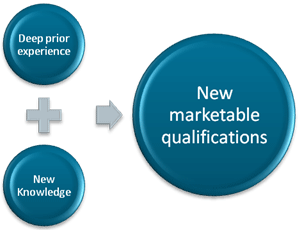5 Ways to Find Missing Requirements
Doesn’t it seem like we can hardly go a day without reading about how missed requirements are leading to incredible amounts of wasted time, energy, and money on information technology projects? I have been on enough projects to know that the statistics are most likely telling a realistic story about how projects get scoped, defined, and delivered, but that they are not necessarily giving a comprehensive account of the situation.
In this article, we’ll look at 5 practices we employ as business analysts to discover hidden requirements, and how organizational pressures, project circumstances, and business analysis processes can negatively impact the outcomes of those techniques, leading to the costly reality of overlooking requirements.
Practice #1 – Requirements Reviews and Buy-In
It is not uncommon to discover dozens of requirements during the final requirements review stage. Walking through a requirements specification, or a portion of a requirements specification, with the goal of being sure everything necessary has been included, almost necessarily uncovers additional information.
When you are getting ready to approve, finalize, or simply be done with a requirement, your stakeholders tend to invest a little extra time and energy in being sure it is right.
But the review process only works if you establish the importance of the review, making it very clear that once we review this document, development will begin based on what is inside it, and that means the cost of change starts to go up.
This stage of the process can go wrong if stakeholders do not show up to requirements meetings, do not understand the enormity of what approval means, or do not feel bought into the project in the first place. It also does not work if a critical stakeholder is not invited in the first place, which leads us to the next way to find missing requirements.
Practice #2 – Include All Possible Stakeholders
While it is never a great idea to invite dozens of people to a single requirements meeting, good business analysts ensure that all relevant stakeholders are looped into the project and given the opportunity to share their concerns, needs, and expectations. If you are consistently neglecting requirements in a particular area, identify a new stakeholder from that area to include on your project teams.
This part of the process can go wrong when business analysts are assigned to specific areas of the business and projects are assumed to only impact that area. It can also go wrong when managers assign uninformed stakeholders to projects or refuse to assign stakeholders at all. Organizational politics can also be a factor, say, if a business sponsor purposely excludes one or more stakeholders from the project.
Practice #3 – Apply Analysis Techniques
While stakeholders are the source of many requirements, other requirements are discovered by analyzing the stakeholder needs and discovering implications. The result of good business analysis is a complete view of the solution. For example, every field on a report must be entered into the system at some point, whether directly by a user or by some sort of data feed.
Unfortunately, well-intentioned templates can negatively impact the analysis process. When you are capturing requirements in long lists, it is difficult to make all of the necessary links between requirements. As luck would have it, the same is true if you are capturing requirements in a substantial product backlog. You need analysis models, such as business processes, use cases, or data models, to help you discover the missing connections.
What’s more, a large template can give the false sense of security. Just because you have filled out a 30 page template with twice as many sections does not necessarily mean that you have discovered all of the requirements!
Practice #4 – Invest (Just) Enough Time
Good requirements take time from stakeholders, from technical experts, and from someone performing business analysis activities. Part of being a business analyst is putting together a reasonable plan that explains the steps you will go through to elicit, analyze, and confirm the requirements, identify who needs to be involved in each step, and about how long each step will take.
While it might seem counter-intuitive, more time is not always better. Business and technology contexts change quickly. Investing too much time in the requirements process can mean that your early requirements become stale before they are even ready to be implemented. Minimizing missed requirements comes from crafting a plan that secures just enough time to discover the best possible requirements given the project goals and constraints.
However, it is not uncommon for a business analyst to be assigned a mere week or two to finish requirements before development on a sizable project is targeted to start. When organizations shrink project timelines, or the time dedicated to the requirements aspect of the project, without also shrinking the scope of the business analysis effort, then we nearly guarantee we will miss requirements.
Practice #5 – Start at the Beginning
You cannot solve a problem that you do not understand. You cannot address a business need that has not been defined. You cannot sell a product that the customer does not want.
Business analysts understand the big picture of the project, which includes why the organization is investing in the project and the over-arching goal to be accomplished.
I would venture to say that the vast majority of missing requirements are actually missed at the very beginning of the project. If no one inside the project compels the business community to be clear about exactly what problem needs to be solved, or if a business sponsor resists a business analyst’s typical “why” line of questioning, the entire team is working like a ship without a rudder. You run the risk of chasing rabbits down holes and discovering a lot of requirements that are irrelevant, while overlooking the big important requirements that should be staring you right in the face.
Create More Positive Outcomes
As business analysts, we can expect to face circumstances that, if left unchecked, will cause us to miss requirements. It is up to us to clarify the conditions under which we can do our best work and improve our contexts so we can improve our requirements.
Don’t forget to leave your comments below.


 When I think about my transition into business analysis, the first thought that comes to mind is a hallway conversation. A senior BA on the business analyst team approached me on my way back to my desk and mentioned a new position was opening in the department. She recommended I apply.
When I think about my transition into business analysis, the first thought that comes to mind is a hallway conversation. A senior BA on the business analyst team approached me on my way back to my desk and mentioned a new position was opening in the department. She recommended I apply.
 One of the ways we can unknowingly hold our careers back is failing to understand and communicate our value effectively. Many of the business analysts I work with in their job search and career development initially lack an appreciation for how they contribute to the organization’s bottom line.
One of the ways we can unknowingly hold our careers back is failing to understand and communicate our value effectively. Many of the business analysts I work with in their job search and career development initially lack an appreciation for how they contribute to the organization’s bottom line.




